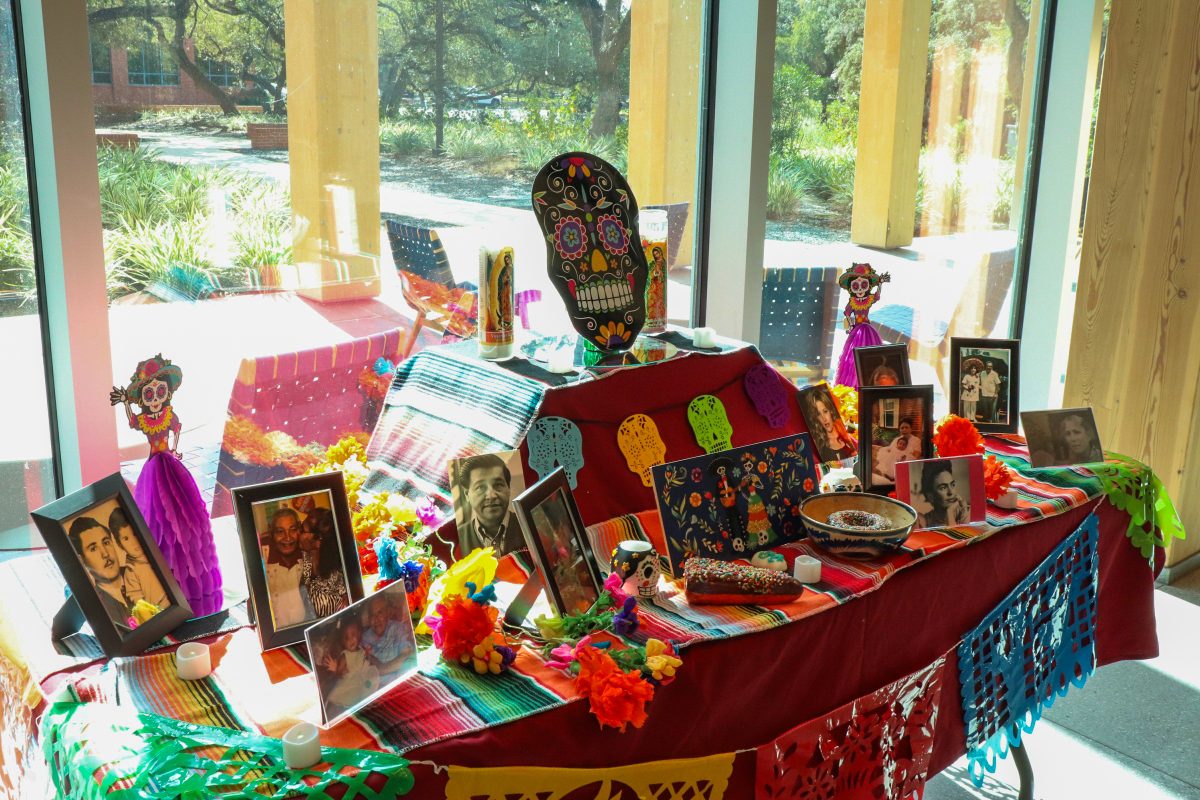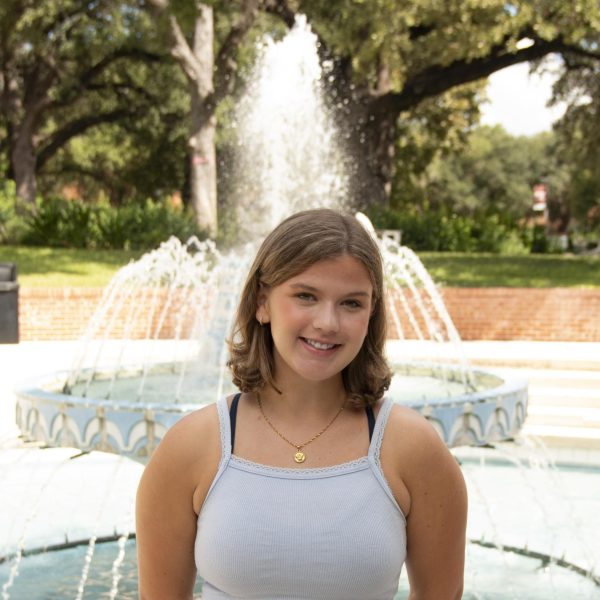For their annual Muertos Festival, the Trinity University Latino Association (TULA) created four ofrendas, altars of offerings dedicated to those who have passed away, across campus. This tradition started in 2015 and has since become a recurring event. Following a campus-wide Catholic Mass on Oct. 29, TULA invited Chaplain Alex Serna-Wallender to bless las ofrendas on campus, a tradition rooted in Mexican culture. This festival celebrates the Mexican holiday and aims to cultivate community for Latino Trinity students.
In a dazzling display of vibrant colors, intricate altars and heartfelt tributes, Día de los Muertos, or the Day of the Dead, celebrates the enduring Mexican tradition that honors the dearly departed.
TULA is doing their part to participate in this celebration, adorning Trinity with las ofrendas. These displays are scattered around campus, finding their homes in the Center for the Sciences and Innovation (CSI), Dicke Hall, Coates Student Center and Elizabeth Huth Coates Library. Adam Garza, senior neuroscience and chemistry double-major and co-president of TULA, expressed gratitude for the display of Mexican culture at Trinity.
“[Las Ofrendas] allow us to have a piece of our culture here at Trinity. It helps me connect here and make Trinity like home,” Garza said.
Yet, the path to celebrating these cherished traditions has not always been easy. A Latino alum shared a presentation with TULA about racist acts in the past taken against students’ ofrendas.
Before TULA was established, when students wanted to set up their own ofrendas on campus in the ‘70s, they were concerned about the backlash from other students and thus kept their ofrenda hidden behind Coates Student Center.
Since 2021, TULA has placed three more altars across campus. Kaleigh Cansino, sophomore sociology major and public relations chair of TULA, shares her pride in these displays and the cultural richness they bring to Trinity.
“We are in a predominantly white college, so having this piece of culture in a place where we are learning and bettering ourselves is a very big deal. It’s making sure people feel recognized and that their culture is being recognized in a place where it may not have been in the past,” Cansino said.
In addition to the altars, TULA is preparing for their Muertos Fest on Nov. 2, featuring a film screening, traditional calavera (skull) face painting, calavera poems and sugar skull painting. It is a smaller-scale version of San Antonio’s grand festival held from Oct. 28 to 29, a celebration of life in the heart of downtown.
Anyone can sign up to reserve an ofrenda at the San Antonio Muertos festival, and organizations will often highlight a particular tragedy and honor those lost souls, such as with those who died in the Uvalde shooting.
“Last year, there was an altar for the Uvalde shooting, and that was so powerful. You were crying walking through that,” Cansino said.
Melissa Rosario, junior history and biology double-major and co-president of TULA, helps with Día de los Muertos celebrations on campus. She expressed why she believes this holiday is significant to not only Mexican culture, but to all others as well.
“It’s a holiday where a collision of cultural diversity happens. Everyone has a family member who has passed away, so I feel like it is a celebration for everyone to go in and remember their family members,” Rosario said. “We see it as a celebration of their life instead of feeling sad that they’re not here — we celebrate what they did in their time. It’s nice to share those stories with everyone around and have those activities that remind you of them.”








